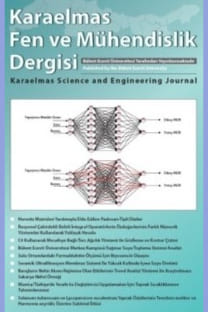Thamnobryum alopecurum’un in vitro Doku Kültürü, Fitokimyasal İçeriği, Biyolojik Aktivitesi
Bu çalışmada, biyolojik ve farmakolojik olarak aktif bileşiklerin potansiyel kaynağı olabilecek olan Thamnobryum alopecurum’un sporlarından ve gametofit yapılarından in vitro doku kültürü tekniğiyle gametofit üretimi gerçekleştirilmiştir. Ayrıca doğadan toplanan ve in vitro doku kültürü ile üretilen örneklerde, 12 farklı fenolik bileşiğin kantitatif miktarları belirlenmiştir. Aynı zamanda herbaryum ve doğadaki taze örneklerinin total fenol içeriği ve antioksidan aktivitesi yönünden değerlendirilmiştir. Çalışmada in vitro doku kültürü, gametofitin klorofilli uç sürgünleri ve sporofit kapsüllerinden elde edilen sporların modifiye MS Murashige ve Skoog ortamlarına farklı konsantrasyonlarda bitki büyüme düzenleyicileri eklenmiş ekimiyle yapılmıştır. T. alopecurum’un spor kültüründe en iyi büyümenin gerçekleştiği ortam MS3 iken gametofit kültüründe ise bu ortam MS1 ’dir. Total fenol içeriği bakımından gallik asit eşdeğerine göre T. alopecurum’un 0,0065±0,0015 mg/g içeriğe sahip olduğu saptanmıştır. Herbaryum örnekleri ve in vitro doku kültürü ile üretilen örneklerinde, 12 farklı fenolik bileşiğin gallik asit, kafeik asit, p-kumarik asit, taksifolin, rosmarinik asit, kemferol, genistein, kersetin, biokanin A, daidzein, formononetin, şikimik asit HPLC-UV ile kantitatif miktar tayinleri yapılmıştır. T. alopecurum spor ve gametofit kültürlerinde en yüksek miktarda şikimik asit MS8 ortamında 120,92±41,4 olarak saptanmıştır. Herbaryum örneklerinde ise en yüksek miktarda Nisan ayında toplanan ekstraklarında şikimik asit 3,52±1,84 mg/g olarak belirlenmiştir. T. alopecurum etkin bir şekilde in vitro doku kültür ortamlarında üretilmiş, bununla beraber kayda değer antioksidan aktiviteye sahip olduğu ve ayrıca bazı fenolik bileşiklerin bulunması nedeniyle briyofit türlerinin gelecekteki ileri biyoteknolojik çalışmalarda kaynak olacağı kanaatini ortaya koymaktadır.
Anahtar Kelimeler:
Thamnobryum alopecurum, in vitro doku kültürü, Antioksidan aktivite, Total fenol içeriği
Thamnobryum alopecurum Hedw. Gangulee in vitro Tissue Culture, Phytochemical Content, Biological Activity
In this study, gametophyte production was performed from T. alopecurum spores which have a potential source of biologically and pharmacologically active compounds, and gametophyte structures by in vitro tissue culture technique. In addition, quantitative amounts of 12 different phenolic compounds were determined in samples both collected from nature and produced by in vitro tissue culture. At the same time, fresh samples of T. alopecurum and herbarium specimens were evaluated in terms of their total phenol content and antioxidant activities. The in vitro tissue culture was implemented by planting the terminal shoots of gametophyte and spores of mature capsules into modified MS Murashige and Skoog Media plant growth regulators added at different concentrations medium. While the best growth in T. alopecurum spores culture was observed in MS3 medium, in gametophyte culture it was MS1 medium. In terms of total phenol content, according to gallic acid equivalents, it was defined that T. alopecurum had the content of 0,0065±0,0015 mg/g on the average. On the herbarium samples of T. alopecurum and the other ones that were produced by in vitro tissue culture techniques, quantitative analyses of 12 different phenolic compounds gallic acid, caffeic acid, p-coumaric acid, taxifolin, rosmarinic acid, kaempferol, genistein, quercetin, biochanin A, daidzein, formononetin, shikimic acid were determined by means of HPLC-UV. The highest amount of shikimic acid of in vitro spores and gametophyte culture was in MS8 medium as 120,92±41,4 mg/g. However, in herbarium samples collected in April, the highest amount of shikimic acid was determined as 3,52±1,84 mg/g. With this study, T. alopecurum is effectively produced in in vitro tissue culture media. The results also show that it has considerable antioxidant activity, which suggests that because of the presence of some phenolic compounds bryophyte species will be the source of future biotechnological studies.
Keywords:
Thamnobryum alopecurum, in vitro tissue culture, Antioxidant activity, Total phenol content,
___
- Abdille, H., Singh, RP., Jayaprakasha, GK., Jena, BS. 2005. Antioxidant activity of the extracts from dillenia indica fruits. Food Chem., 90: 891-896.
- Ellnain-Wojtaszek, M., Kruczynski, Z., Kasprzak, J. 2003. Investigation of the free radical scavenging activitiy of Ginkgo biloba L. leaves. Fitoterapia, 74: 1-6.
- Gamborg, OL., Miller, RA., Ojima, O. 1968. Nutrient requirements of suspensioncultures of soybean root cell. Exp. Cell. Res., 50: 151-158
- Villarreal, JC., Villarreal, J., Cargill, DC., Hagborg, A., Söderström, L., Renzaglia, K. 2010. A synthesis of hornwort diversity: Patterns, causes and future work. Phytotaxa, 9: 150- 166. Doi: 10.11646/phytotaxa.9.1.8.
- Wang, CK., Lee, WH. 1996. Separation, Characteristics, and Biological Activities of Phenolics in Areca Fruit. J. Agric. Food. Chem., 44(8): 2014-2019 DOI: 10.1021/jf950611o
- Yen, GC., Duh, PD. 1994. Scavenging effect of methanolic extracts of peanut hulls on free-radical and active-oxygen species. J. Agric. Food. Chem., 42: 629-32.
- E., Renner, MAM., Sass-Gyarmati, A., Schäfer-Verwimp, A., Moragues, JGS., Stotler, RE., Sukkharak, P., Thiers, BM., Uribe, J., Váňa, J., Villarreal, JC., Wigginton, M., Zhang, L., Zhu, R-L. 2016. World checklist of hornworts and liverworts. PhytoKeys, 59: 1-821. https://doi.org/10.3897/ phytokeys.59.6261
- ISSN: 2146-4987
- Yayın Aralığı: Yılda 2 Sayı
- Başlangıç: 2011
- Yayıncı: ZONGULDAK BÜLENT ECEVİT ÜNİVERSİTESİ
Sayıdaki Diğer Makaleler
Büyük Ek Boyutlar Modelinin γγ → ZZ Süreci ile İncelenmesi
Coğrafi Bilgi Sistemleri Tabanlı Davraz Dağı Çığ Duyarlılık Haritası, Isparta, Türkiye
SİBEL DEMİR KANMAZALP, MUHARREM DİNÇER, ALAADDİN ÇUKUROVALI, İBRAHİM YILMAZ
Se Katkılı $Bİ_2Te_3$ Nanokristal Materyallerin Sentezi ve Karakterizasyonu
Türkiye’den İki Anchonium DC. Brassicaceae Taksonunda Karyotip Analizleri
Esra MARTİN, Murat ÜNAL, Mustafa İLERİ
Sıralı Düzgün Uzaylarda Lineer Olmayan Büzülmeler İçin İkili Sabit Nokta Teoremleri
Thamnobryum alopecurum’un in vitro Doku Kültürü, Fitokimyasal İçeriği, Biyolojik Aktivitesi
YASİN HAZER, HATİCE ÇÖLGEÇEN, UFUK KOCA ÇALIŞKAN, GÜRAY UYAR
Evsel Katı Atık Yönetiminde Halkın Yaklaşımı: Bursa İli Örneği
